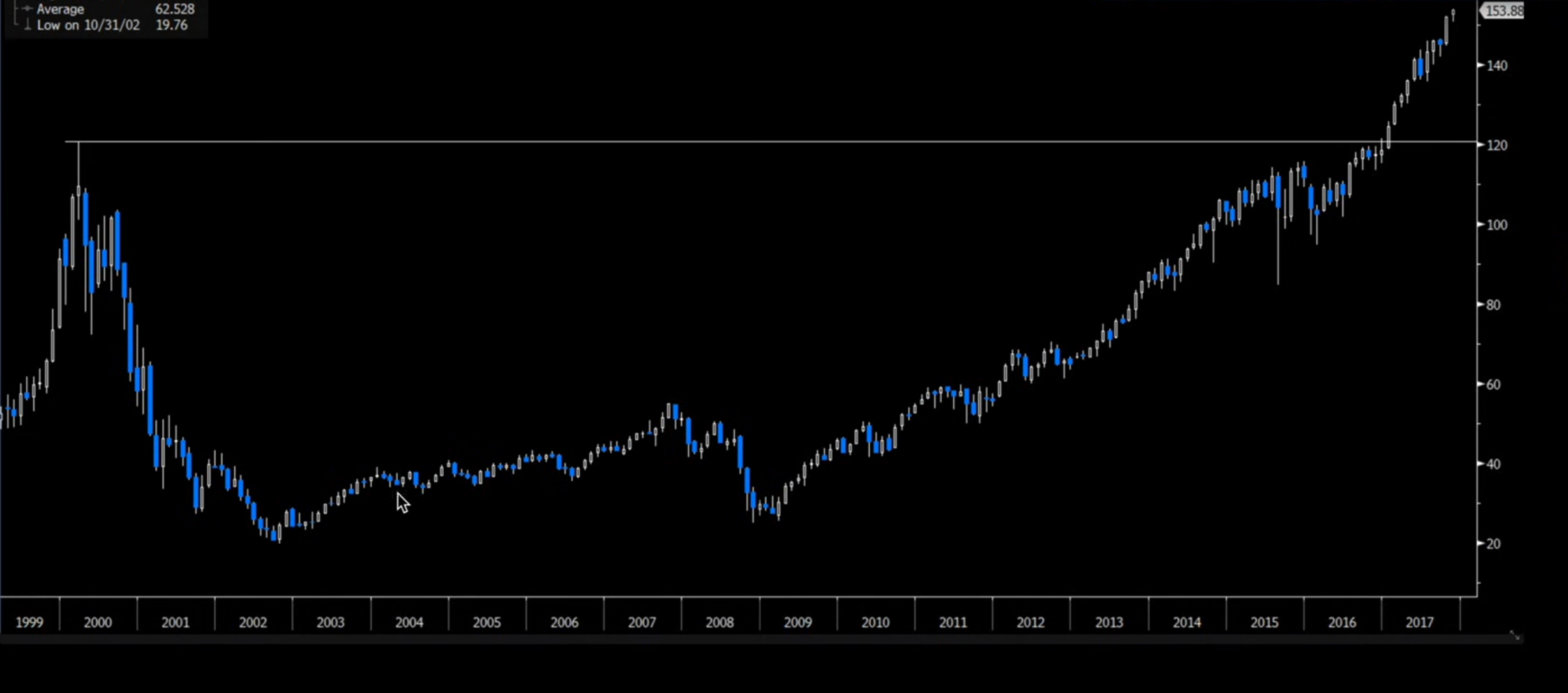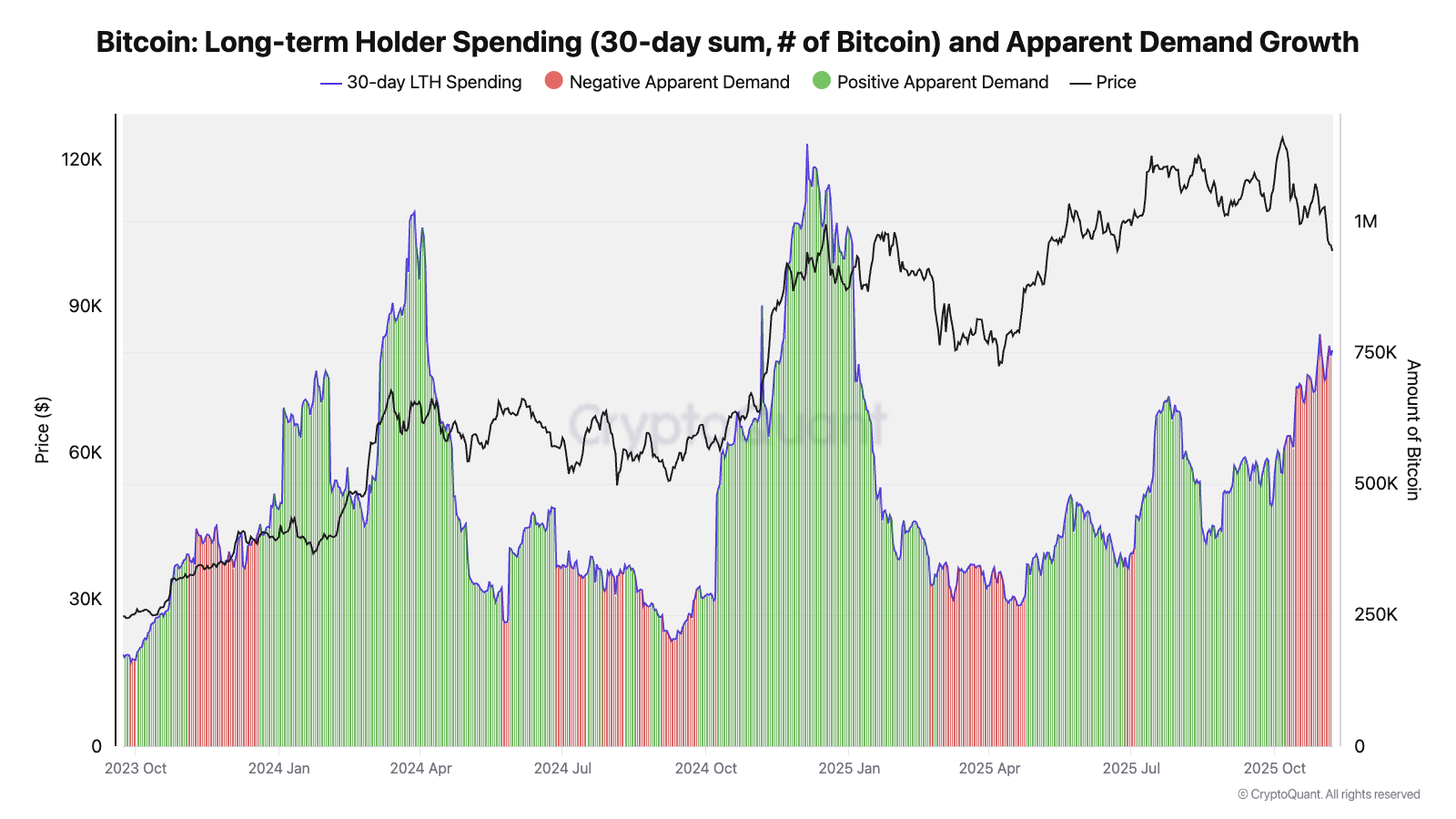Bitcoin selling pressure from whales and long-term holders is suppressing crypto prices, preventing a blow-off top similar to the post-2000 dot-com crash. Analysts note increased selling since October, with demand struggling to absorb supply, but consolidation may end within a year, offering potential relief for investors.
-
Analyst Jordi Visser draws parallels between current crypto dynamics and the 2000 dot-com bust, where venture capitalists sold into rallies after lock-up periods ended.
-
Whales are cashing out at all-time highs, exerting constant pressure that keeps Bitcoin and altcoins like Ethereum and Solana from surging higher.
-
Long-term holder selling has accelerated since October 2025, with supply overwhelming demand; data from on-chain analytics shows BTC holders dumping coins faster than the market can absorb, per CryptoQuant insights.
Explore Bitcoin selling pressure from whales mirroring the dot-com crash aftermath. Expert analysis reveals suppressed prices and consolidation end in sight—vital insights for crypto investors seeking the next rally. (152 characters)
What is causing the current Bitcoin selling pressure?
Bitcoin selling pressure stems primarily from large-scale investors, known as whales, and long-term holders liquidating their positions into the market. This activity mirrors the prolonged consolidation following the 2000 dot-com stock market crash, where venture capitalists were compelled to hold investments during mandated lock-up periods before selling aggressively once freed. Analyst Jordi Visser highlights that this dynamic has kept crypto asset prices suppressed, preventing a rapid ascent to new highs despite underlying demand.
In the wake of the dot-com bubble burst, which saw stock values plummet by up to 80%, the U.S. market endured 16 years of sideways movement before recovering. Visser explains that many tech stocks traded below their initial public offering prices, forcing investors to sell into every rally for liquidity. Today, a similar pattern unfolds in crypto, with venture capital firms and insiders offloading Bitcoin, Solana, Ethereum, and other altcoins at elevated levels. This relentless selling creates a ceiling on price appreciation, as supply floods the market without corresponding buyer absorption.
However, Visser emphasizes that crypto’s recovery timeline will likely be shorter. He estimates the current consolidation phase, characterized by this Bitcoin selling pressure, is approaching its conclusion, with no more than one year remaining before potential upward momentum resumes. This assessment comes amid broader market concerns, as October 2025 marked the onset of heightened bearish sentiment, prompting several investment firms to temper their optimistic forecasts for Bitcoin and the wider cryptocurrency ecosystem.

The US stock market took about 16 years to recover to its previous all-time high and was suppressed by large investors selling into the market. Source: Jordi Visser
The implications of this selling extend beyond immediate price action. On-chain data indicates that large transactions from long-term wallets have surged, contributing to volatility and keeping Bitcoin from breaking decisively above recent resistance levels. Market participants must navigate this environment carefully, as the balance between supply and demand remains precarious.
Has Bitcoin bottomed out around the $100,000 level?
Bitcoin’s price exhibits tentative signs of stabilization near the $100,000 mark, though sustained Bitcoin selling pressure from whales could push it lower toward $92,000 if demand fails to materialize. CryptoQuant analyst Julio Moreno observes that whale activity at all-time highs is a natural occurrence, but it becomes problematic when long-term holders accelerate their sales without offsetting buyer interest. Since October 2025, on-chain metrics reveal a marked uptick in long-term holder outflows, with these investors dumping coins at a rate exceeding market absorption capacity.
Moreno’s analysis underscores that the core issue lies in contracting demand. “Since October, long-term holder selling has increased; nothing new here, but demand is contracting, unable to absorb long-term holder supply at a higher price,” he stated. This imbalance has led to price suppression, echoing historical patterns where oversized supply events prolonged downturns. Supporting data from blockchain trackers shows that addresses holding Bitcoin for over a year have reduced their balances by significant margins, contributing to the current floor-testing around $100,000.
Expert opinions vary on the durability of this support level. Some on-chain indicators, such as the Realized Price metric, suggest that $100,000 aligns with average acquisition costs for recent holders, potentially acting as a psychological and technical bottom. However, if whale selling intensifies—driven by liquidity needs among institutional players—further declines are plausible. Historical precedents, like the 2022 bear market, demonstrate how prolonged supply overhangs can extend consolidation periods, but current network hash rates and adoption trends point to underlying resilience in the Bitcoin ecosystem.

Long-term BTC holders are now dumping their coins onto the market faster than the market can absorb the supply. Source: Julio Moreno
To mitigate risks, investors are advised to monitor key metrics like the Long-Term Holder Supply Ratio and exchange inflows. These tools provide early warnings of intensified selling. While the $100,000 level holds for now, a reversal in demand—possibly fueled by macroeconomic shifts or regulatory clarity—could alleviate the pressure and signal the start of a new accumulation phase.
Frequently Asked Questions
What drives whale selling in the Bitcoin market?
Whale selling in Bitcoin is often driven by the need for liquidity among large holders, including venture capital firms and early investors seeking to realize gains at all-time highs. This behavior, as noted by analysts like Jordi Visser, creates Bitcoin selling pressure by flooding the market with supply, particularly after lock-up periods end, mirroring dynamics from past market cycles like the dot-com era. (48 words)
How long might this crypto consolidation phase last?
The ongoing crypto consolidation, marked by steady selling from long-term holders, is expected to wrap up within the next year, according to expert Jordi Visser. While reminiscent of the 16-year post-dot-com recovery, Bitcoin’s faster innovation and adoption cycles suggest a quicker rebound, potentially leading to renewed price discovery once supply pressure eases. (52 words)
Key Takeaways
- Whale Selling Parallels History: Current Bitcoin selling pressure echoes the 2000 dot-com crash, where investors sold into rallies post-lock-up, prolonging market suppression for over a decade.
- Demand Absorption Challenge: Long-term holders are offloading BTC faster than buyers can absorb since October 2025, per CryptoQuant data, risking a drop below $100,000 without fresh inflows.
- End in Sight: Consolidation nears completion in under a year, urging investors to prepare for potential upside by tracking on-chain metrics and macroeconomic cues.
Conclusion
In summary, Bitcoin selling pressure from whales and long-term holders continues to cap crypto prices, drawing clear analogies to the extended aftermath of the 2000 dot-com bubble. Insights from analysts like Jordi Visser and Julio Moreno highlight the role of supply-demand imbalances in this phase, yet signals point to an impending shift. As the market matures, investors should focus on building resilient portfolios, positioning themselves for the next bullish cycle that could redefine cryptocurrency’s trajectory in the coming year.
